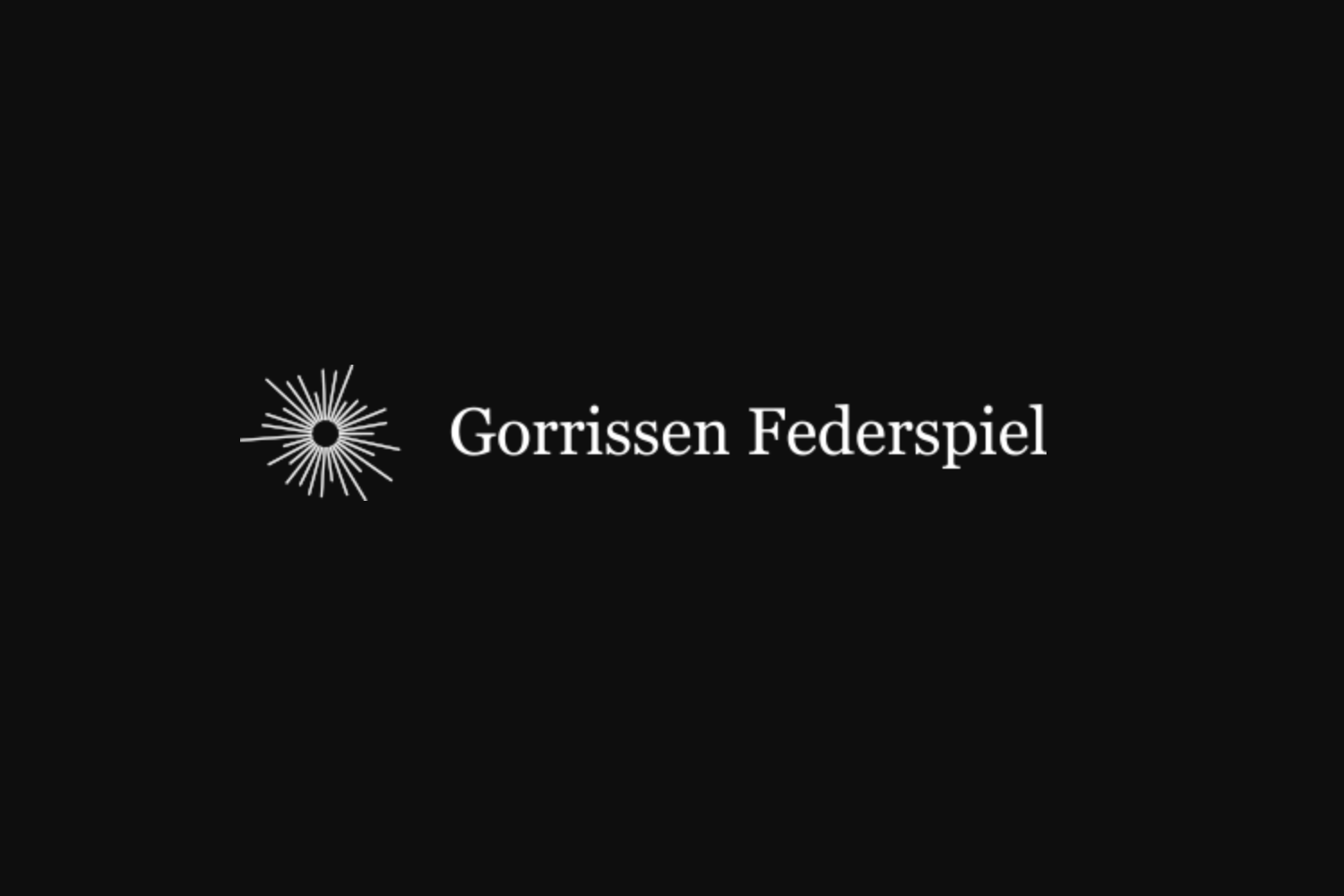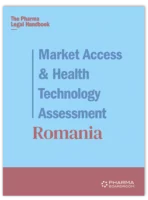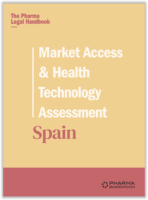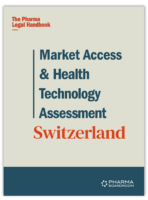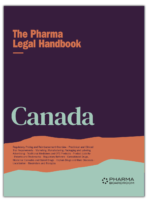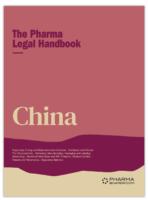Post Market-Approval Processes and Regulations
Gorrissen Federspiel / Denmark
Join industry executives in staying informed on the market access and HTA process in Denmark.
1. What are the pricing principles and processes in your country?
As mentioned above, there are two main markets for medicines in Denmark: the primary healthcare sector (prescription medicines) and the secondary sector (hospitals). A third market consists with respect to the retail sale of certain over-the-counter medicines.
The companies placing the medicinal products on the Danish market are in principle free to set the prices for the medicinal products both within the primary sector and the secondary sector.
The company responsible for placing a medicinal product on the market must notify the pharmacy purchase price (Danish: Apoteksindkøbspris) to the Danish Medicines Agency at least 14 days prior to launch of the products, and prices can be changed every 14 days. The prices are published by the Danish Medicines Agency on the website www.medicinpriser.dk.
However, the principle of free pricing is influenced by a number of factors, e.g. by the assessments made by the Danish Medicines Council, pricecap agreements, and the system of substitution and reimbursement also influences the pricing of medicines (please also see below).
The primary healthcare sector
In the primary healthcare sector, pharmacies have the exclusive right to sell prescription medicines (and most over-the-counter medicines) to consumers.
The medicines reserved for the exclusive sale in pharmacies must be sold at the same price from all pharmacies and the pharmacies must charge the so-called pharmacy retail price (Danish: Forbrugerpris) when selling to consumers. The pharmacy retail price is calculated on the basis of the pharmacy purchase price, a retail margin and potentially different handling fees, in accordance with the defined formulas and margins set out in the Danish Executive Order on Calculation of Consumer Prices on Medicines (Executive Order no. 2500 of 13 December 2021).
As mentioned above, the prices for medicines are set for 14 days at a time and can be changed every second Monday. The purpose of the frequent price changes is that it may facilitate competition. The prices are available at www.medicinpriser.dk.
The prices for over-the-counter medicines that are not reserved for the exclusive sale in pharmacies are not specifically regulated, and the pharmacies and other authorised retail sellers are free to determine the consumer prices.
General practitioners are free to determine which medicines to prescribe for their patients. However, in an effort to promote rational and appropriate use of medicines within primary healthcare, the Institute for Rational Pharmacotherapy (Danish: Indsatser for Rationel Farmakoterapi) under the Danish Health Authority drafts advice targeted general practitioners based on available evidence to help general practitioners prescribe medicines in accordance with rational pharmacotherapy.
Further, general practitioners are influenced in several other ways when prescribing medicines, e.g. as part of educational meetings, treatment guidelines, and drug formularies.
The secondary healthcare sector (public hospitals)
New medicines (or existing medicines with new indications) that are intended to be placed on the Danish market within the secondary sector must be assessed by the Danish Medicines Council (Danish: Medicinrådet). Please see more information on the Danish Medicines Council and their assessments below in Chapter 5.
Amgros is the Danish wholesale distribution company responsible for the majority of procurement on behalf of the Danish Regions (the Danish hospitals). Price negotiations are done in collaboration with the Danish Medicines Council, the Drug and Therapeutics committees and the pharmacies at the hospitals. After tendering, Amgros enters into contracts with the winning suppliers on behalf of the Danish Regions. Amgros also provides economic evaluations to the Danish Medicines Council.
2. What pricing models are currently being utilised in your country?
As mentioned above, medicine pricing is in principle unrestricted as the companies placing the medicinal products on the Danish market are free to set the prices for the medicinal products.
The main pricing models are:
i) Cost-plus pricing (i.e., letting the price be determined on the basis of production/distribution costs and a profit margin);
ii) Competition-based pricing (i.e., letting the price be determined on the basis of price levels of competitors’ products);
iii) Willingness-to-pay pricing (i.e., basing the price on the highest price a consumer or buyer is willing to pay for one unit);
iv) Value-based pricing (i.e., letting the price be determined on the basis of perceived value to the costumers as opposed to actual costs, market price, competitors’ prices or historical prices); and
v) Mixed price models.
The suitable pricing model will often depend on the type of pharmaceutical company/pharmaceutical products in question.
For example, due to the significant time spent on and costs related to research and development of new innovative medicines, companies with originator medicines will often define their pricing strategies on the value-based model. Conversely, companies with generic/biosimilar medicines will normally not have the same incentives as they do not have the same initial level of investments into research and development that they need to recoup. Therefore, generic/biosimilar companies often rely on cost-plus pricing mod-els, as their costs are primarily of a variable nature.
Another factor that contributes to selection of a pricing model is the consideration of the applicable customer/payer. For example, within the public hospital sector there are no patient co-payments and costs are handled by the hospitals/the Danish regions.
3. What are the processes and principles around reimbursement approval?
Substitution system
In an effort to facilitate competition, the Danish pharmacies are as a starting point required to hand out the cheapest medicines within so-called substitution groups established by the Danish Medicines Agency.
The substitution groups are established based on the following criteria:
• at the most, there may be 10 pct. (25 pct. for certain medicinal products) divergence in the size of package from the smallest package to the largest package in the group;
• as many packages as possible must be placed in the same substitution group;
• if it is not possible to include all packages within a group, the package that is furthest percentage-wise from the rest of the packages is omitted (defined substitution groups); and
• the percentage calculation is made on the basis of the smallest package size in the group.
The medicines within the substitution groups are said to be synonymous – they include the same active ingredient, the same quantity and are based on the same form of administration.
The substitution system means that once generic medicines enter the market, the generic (and parallel imported) medicines will be placed in the same group as the originator medicines. Thus, essentially, the substitution system intends to give incentive for manufacturers to lower their prices, as the cheapest price given in the abovementioned 14-day periods will “win” the most sales within the substitution group.
However, there are certain exemptions to the pharmacies’ obligations under the substitution system. The pharmacies are not required to hand out the cheapest medicine within a substitution group if i) the prescribing physician has indicated on the prescription that there is to be “no substitution”; ii) the patient wants to purchase the specific medicine that the physician has prescribed even though cheaper alternatives are available; and iii) if the price difference between the cheapest medicine in the substitution group and the prescribed medicine is less than certain specified thresholds.
If the medicines within a substitution group are subject to reimbursement, the substitution groups are often referred to as reimbursement groups (Danish: tilskudsgruppe), and the reimbursement price will be calculated on the basis of the cheapest product within the reimbursement group.
Reimbursement system
In the Danish public hospital sector, pharmaceutical treatments are administered or dispensed to patients free of charge – the hospitals cover the costs and there are no co-payments from patients. Within the primary sector, the amount of money the patient must pay for medicines depends, i.e., on the reimbursement status of the medicine.
In Denmark, the Danish Medicines Agency decides on the reimbursement status of each medicinal product. The cost of medicines eligible for reimbursement is funded by the state.
The Danish Medicines Agency determines which medicinal products that are eligible for reimbursement based on an application from the company placing a medicinal product on the market.
There are three types of general reimbursement:
i) reimbursement for prescription-only medicinal products;
ii) conditional reimbursement for prescription-only medicinal products (e.g., the condition that reimbursement is only available to a specific patient population – i.e. that reimbursement is only available for a specific indication); and
iii) conditional reimbursement for over-the-counter medicinal products.
In special cases, the Danish Medicines Agency may also grant individual reimbursement for individual patients. Such reimbursements are granted on the basis of an application from the patient’s physician.
The criteria for obtaining general reimbursement are set out in the Executive Order on Reimbursement (Executive Order no. 728 of 30 May 2022). The main criteria are:
i) the medicine must be safe and have a valuable therapeutic effect on a well-defined indication; and
ii) the price of the medicine must be proportionate with the treatmentrelated value.
General reimbursement will as a starting point not be granted where:
i) initiation of the treatment requires special examination and diagnosis;
ii) there is a high risk that the medicine will be used outside the approved indication;
iii) the medicine is used exclusively or predominantly for treatments that cannot reasonably be expected to be subsidized by the Regional Councils;
iv) the effect of the medicine is not clinically documented;
v) there is a risk that the medicine will be used as first choice treatment, even if the Danish Medicines Agency finds that it should not;
vi) it has not been determined whether the medicine should be used as first choice treatment;
vii) there is a high risk that the medicine will result in substance abuse;
viii) the medicine will mainly be used for treatment within the hospital sector; or
ix) the formulation of the medicine means that patients are not able to administer the medicine themselves.
The Danish Medicines Agency may base its reimbursement decision on recommendations provided by the Danish Reimbursement Committee (Danish: Medicintilskudsnævnet).
The Danish Medicines Agency determines the annual reimbursement thresholds (i.e., the amount a person must spend on medicinal products within a 12 month period before being eligible for reimbursement), and the reimbursement prices. The reimbursement thresholds and the reimbursement prices are used when calculating the applicable reimbursement rate and the amount of co-payment of the patient. The reimbursement thresholds in 2022 are as follows:
The one-year reimbursement period commenced when the patient purchases reimbursable medicine for the first time after expiry of the preceding period.
As a starting point, the reimbursement price used for calculation is the same as the pharmacy retail price.
However, as described above, the Danish Medicines Agency may establish so-called substitution groups of “synonymous” medicinal products. For medicinal products within a substitution group/reimbursement group, the applicable reimbursement price will as a starting point be based on the cheapest medicinal product(s) in the group.
The agency is responsible for making periodic reassessments of the reimbursement status of primary care medicine.
The Danish Medicines Agency’s website www.medicinpriser.dk includes information on the price, substitution groups and reimbursement status of all authorised medicinal products.
Process for reimbursement
The first step in the reimbursement process is for the manufacturer to submit its application. The information required to be submitted as part of an application is detailed in the Danish Medicines Agency’s template application form, which can be found on the agency’s website. It is optional for manufacturers to submit health economic assessments with respect to new medicines.
The next steps in the process will depend on whether the Danish Medicines Agency finds there is a need to involve the Danish Reimbursement Committee. This will usually be the case when the application concerns a new medicine or a medicine with a new indication.
The Danish Medicines Agency will compile a medical file with information on the medicine’s effect and safety profile relative to the current standard of care for the specific indication.
The Danish Medicines Agency will present the case to the Danish Reimbursement Committee, who will then issue a recommendation on whether general reimbursement should be granted.
There are also opportunities for representatives of the manufacturer to participate in meetings with the Danish Reimbursement Committee to present the application.
If the recommendation from the Danish Reimbursement Committee is negative, then there will be a hearing of the manufacturer who will be given the opportunity to comment on the recommendation. Afterwards, the Danish Reimbursement Committee will provide their recommendation to the Danish Medicines Agency who will then issue a decision on the reimbursement status of the medicine.
A negative decision can be appealed by the manufacturer to the Ministry of Health.
Risk sharing pilot programme
On 1 June 2022 a 4-year pilot programme on risk sharing entered into force. The risk-sharing scheme means that certain medicines are selected, and the manufacturer and the Danish Medicines Agency agrees on a number of patients that should be treated and eligible for reimbursement. The medicine in question is then granted a general reimbursement with a clause concerning the number of patients. If the number of patients is exceeded, then the Danish Medicines Agency will be refunded by the manufacturer for the excessive number of patients.
Starting on 1 June 2022 (and until 31 May 2024), companies/manufacturers can apply for their medicines to be included under the pilot programme.
Price-cap agreements
As mentioned above, the starting point in Denmark is that manufacturers are free to set the prices of their medicines. However, the Ministry of Health, the Danish Regions, and the Danish Association of the Pharmaceutical Industry (Lif) have entered into agreements on price-caps (Danish: prisloftsaftaler) that influence the free pricing with respect to the members of Lif.
With regard to hospital medicines, the main principles of the agreement provide that the price-caps from the agreement of 4 June 2009 and the price reductions from the agreement of 18 December 2012 are extended. The price-cap is to be reduced by 2.5% on December 1, 2019, 2.5% on October 1, 2020, 2.5% on October 1, 2021, 2.5% on October 1, 2022 and 2.5% on February 2023. In all cases, the price-cap reduction will take effect in the first pricing period after the listed dates. As a starting point, the prices of hospital medicines are not to be increased more than these prices up until March 31, 2023.
With regard to prescription only medicines eligible for reimbursement, the price-cap agreement constitutes an extension of the price-caps in the agreements of December 15, 2006, December 19, 2008, December 20, 2011, December 15, 2014 and July 1, 2016. This means that in general the price-caps for individual medicine between April 1, 2019 and March 31, 2022 are the prices in place on August 30, 2006 with subsequent adjustments in accordance with previously concluded price-cap agreements.
All prices in the price-cap agreements refer to the pharmacy purchase prices as notified to the Danish Medicines Agency. The price-cap agreements can be found (in English as well as in Danish) on the website of Lif.





